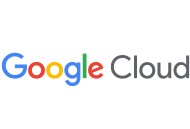
"Our mission is to make sure every resident has access to affordable, high-quality healthcare," says Kevin Cornish, Chief Information Officer at Covered California. "From gig workers and others who don't have employer-sponsored insurance, to those rolling off Medi-Cal, we cover nearly 1.8 million people who wouldn't have health insurance if we didn't exist."
Through its innovative competitive marketplace, Covered California connects people to high-value health plans and providers. Helping people determine their eligibility for healthcare subsidies and ensuring they select the best plan for their needs is the mission. A time consuming and relatively manual part of that journey includes completing the paperwork to determine eligibility. Residents need to submit documents to verify their identity and income while Covered California staff processes a majority of incoming documents by hand. It can take weeks to determine that someone has accidentally submitted the wrong form or inaccurate information. And while this lag doesn't impact coverage, it does create additional work for Covered California staff and consumers to find and submit updated eligibility determination documentation.
Driven by a culture of innovation, the Covered California team wondered if they could make this process as seamless as depositing a check through a banking app. Just take a photo and get instant verification, no waiting required. Turning to long-term partner Deloitte, a recognized leader in AI implementation, Covered California embarked on a proof of concept with Google Cloud. Together, they created a streamlined eligibility process for Californians and a better experience for Covered California employees.
Selecting Google Cloud for security and scalability
Covered California processes 50,000 documents per month with 56 different document classifications, 71% of which have to be validated by hand. But as Cornish explains, "No one wakes up on a Monday and says, 'I can't wait to manually verify 40 documents today.' Automating this process elevates our employees to do more meaningful work, like having a conversation with someone about how their eligibility is determined or to explain the benefits of one plan versus another."
To improve both its service to the public and the employee experience for its in-house team, Covered California sought a solution that could validate documents in real time to make it easier for people to enroll in health insurance plans. As a cloud-agnostic company that uses multiple providers for its various cloud functions, Covered California evaluated all viable solutions on the market.
The team considered factors such as verification accuracy; what percentage of documents could be validated automatically; how many types of documents the solution could manage; the ability to keep up with changes in state policies and procedures; and the flexibility to adapt to changing document formats, layouts, and data fields. Since the agency handles large quantities of personally identifiable information (PII), the solution also needed to provide best-in-class security and compliance.
Verifying residents with speed and precision
In 2023, Covered California ran a small pilot program with Google Cloud to test the viability of Document AI to meet its accuracy, efficiency, and scalability requirements. This generative AI-powered solution uses machine learning (ML) to automate the repetitive task of verifying resident information, improve the speed and accuracy of data extraction, and pull deeper insights from unstructured data contained in various documents.
The team first used the solution out of the box without configuring it to establish a benchmark, achieving a document verification rate of 80-96% depending on document type for an average of 84%. Its legacy solution had an automated verification rate of 28-30%. With additional training, the new ML-based system's success rates will continue to improve.
"We are very pleased by these initial results, and we're trending towards our goal of >95% automated verification," Cornish says. "Now, we're focused on learning the system and using generative AI components to integrate new document types. Document AI does what it says it can do, and we know we can leverage it economically to train for everything in the future."
Covered California has also simplified security and compliance with Assured Workloads, a Google Cloud solution that automatically supports FedRAMP compliance. Meanwhile, Google Security Operations scans all log information, signatures, and threats in the landscape to eliminate security blind spots and proactively safeguard against attacks. In this framework, all solution network traffic is private and encrypted at all times.
Together, these solutions will help Covered California achieve its ultimate goals to reduce costs for residents and increase the number of Californians with access to healthcare, while improving the employee and customer journey.
"It's critical that whichever technology solution we choose has a strong track record of managing security and privacy," Cornish says. "The provider must have the operational discipline to keep that security and compliance going forward."

Bringing innovation to the public sector
Once this solution goes live, California residents will be able to securely upload their documents through the Covered California online application and receive instant verification status, simplifying access to crucial health insurance. "We're about to deliver a solution that was only a concept 12 months ago," Cornish says. "Working with Google Cloud and Deloitte isn't like getting in an Uber to get from point A to B. It's like getting in a trusted colleague's car and going on a journey together."
Following the pilot's success, Covered California will be launching its Document AI-powered system in June 2024. This will allow the team to operationalize the solution in advance of open enrollment in October, a period that drives 75% of Covered California's traffic.
"This whole journey started with broad conversations about what Google Cloud can do and where AI is going. We looked at what the consumer experience looks like in adjacent industries and brought that to the public sector," Cornish says. "By promoting curiosity and investing in innovation, we've encouraged our people to challenge the status quo and created a better experience for everyone."









